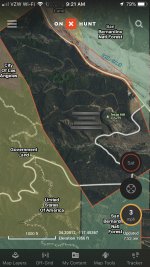Went to a new spot close to home to sample a place where they washed good chunks of the mountains away. I was just wondering if any one could give me some pointers or methods on where to dig and what to look for. I will be panning the bucket of dirt shortly and will let you know if i find color. Thank you. The first photo is where i got a bucket full.
Amazon Forum Fav 👍
Attachments
Upvote
0










